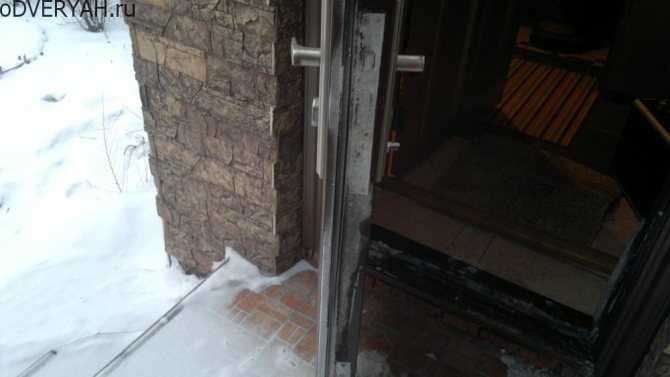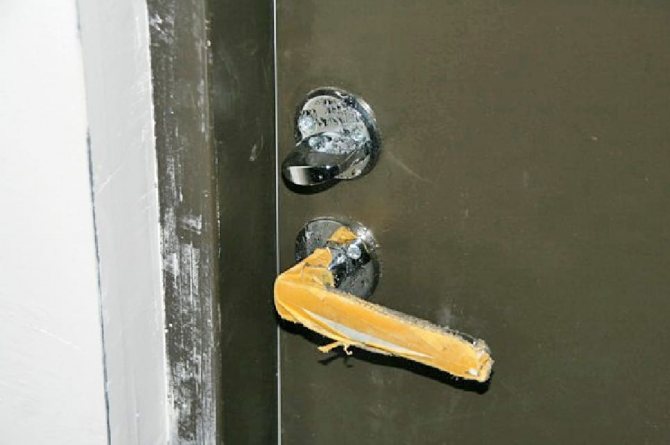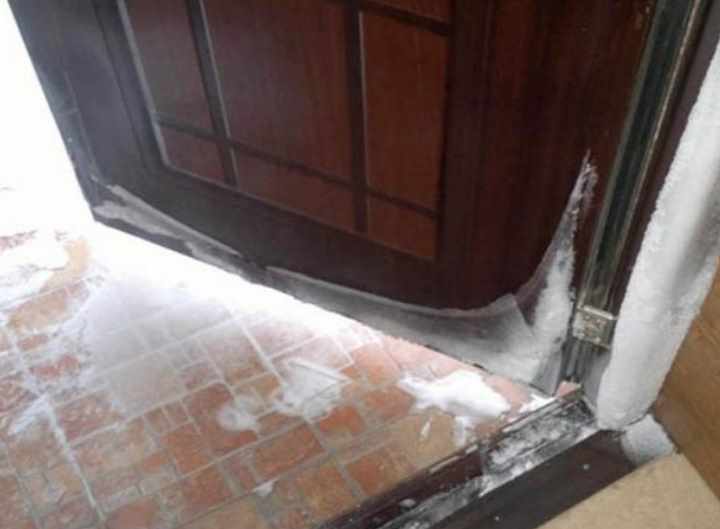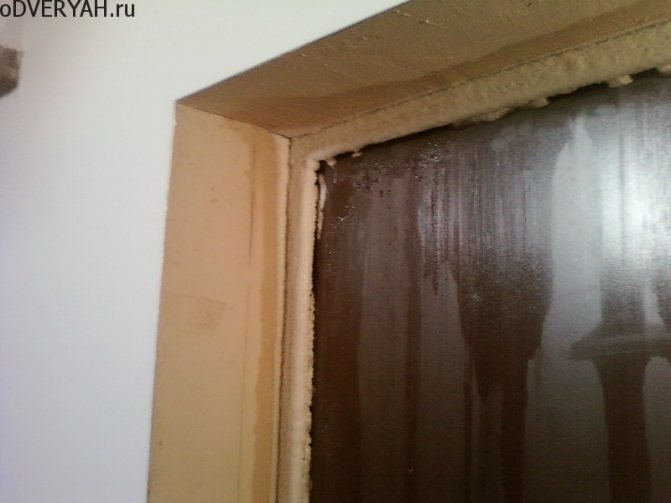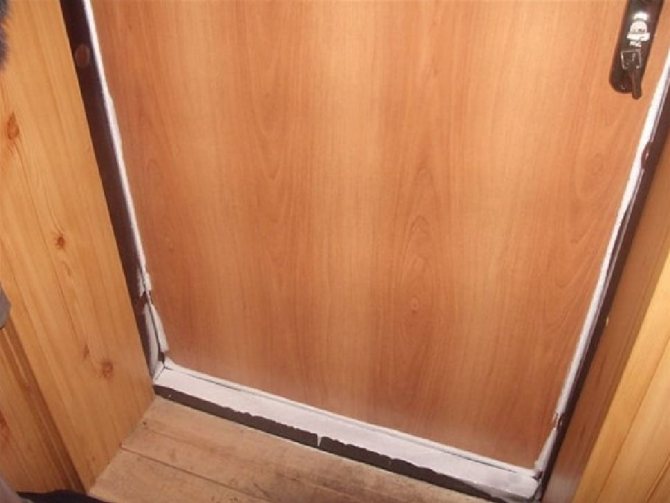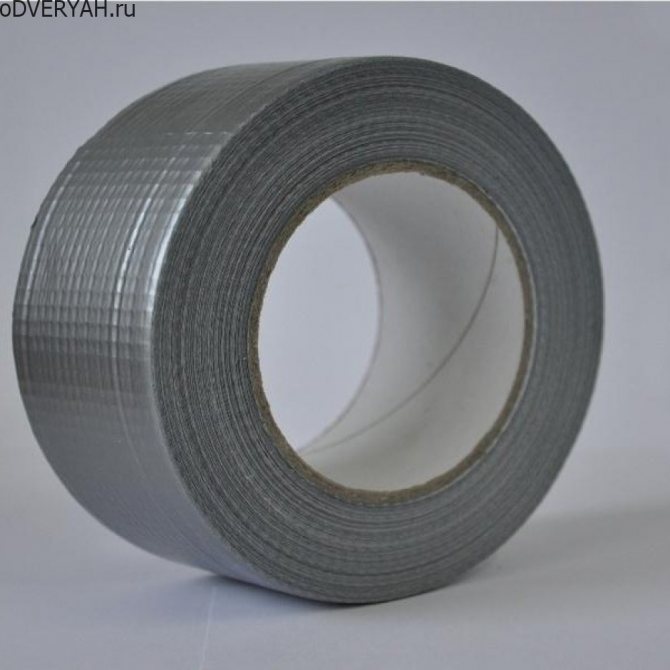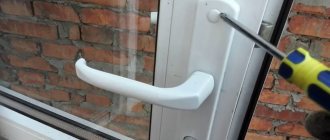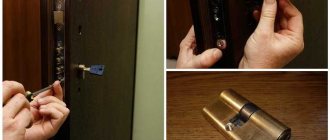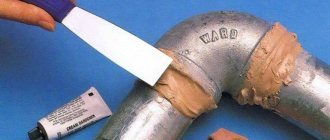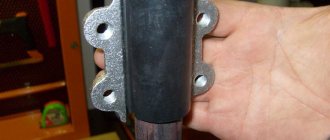I have never faced such a problem as condensation on the front door, only residents of apartment buildings and people who are lucky with the quality of the installation, the device of the door leaf itself, and at the same time the structure of the house. But what did you think: there are quite a few factors that need to be taken into account to eliminate the problem, so in search of the source of condensate, you will have to inspect and analyze the structure on several fronts.

How to get rid of condensation on a metal front door in winter: tips
Initially, before choosing an entrance door, you need to take care of insulation. Be sure to ask the manufacturer what material is used. For this, it is necessary that the entire cavity inside the product is filled with heat-insulating material. It can be mineral wool, expanded polystyrene, polystyrene foam. In addition, there are modern, more expensive thermal insulation materials. This will significantly affect the cost of doors.
Tips on how to get rid of condensation on the door:
- You can sheathe the outside of the door with Styrofoam. Next, you should cover the surface with a coat of primer and weather resistant paint or some other coating.
- Be sure to take care of the insulation of the slopes. That is, the areas that are between the box and the wall. If the box is a pipe, you need to drill some holes in it and fill them with foam. This will provide better thermal insulation.
- Refuse to install a peephole in the entrance metal door. It is this area that is the cold bridge through which cold penetrates into the house and the door is additionally cooled. Because of what condensation forms.
- Place the gasket on the keyhole. This is a kind of peephole that moves. The keyhole is a cold bridge, it must be removed.
- Quite often, condensation forms due to insufficient and leaky fit of the door to the door frame. In this case, the problem is solved quite simply. It is necessary to glue a rubber seal, which will ensure a tight adhesion of the door surface to the frame. More often than not, the companies that installed the door can take care of such a function. Be sure to check the presence of this seal.
- You can use special products that prevent the door from fogging up. Be aware that if you coat the door inside and outside with this mortar, the inside of the structure may fog up. This will not fix the problem. In this case, condensation will accumulate inside the door, which will lead to its failure.
The front door is freezing
The cause of condensation and its consequences
Condensation is the release of water from steam when it comes into contact with a cold surface. With a decrease in temperature, the volume of air decreases, the water molecules in it come closer and combine to form condensate. Indoors, this can be observed on windows and doors, but condensation can also form in the inner layers of structures, for example, in walls. The temperature at which the steam condenses is called the dew point.
Condensation, wherever it occurs, is an undesirable and conceived destructive phenomenon for enclosing structures. The main harm that condensate causes to metal is corrosion.Rust destroys the linen and box over time. Doors, especially low-quality ones, are made of thin metal and if rust is allowed, their protective functions will decrease after 5-7 years. And also rust will destroy the coating - the paint on the canvas that is prone to corrosion will fall off in pieces.
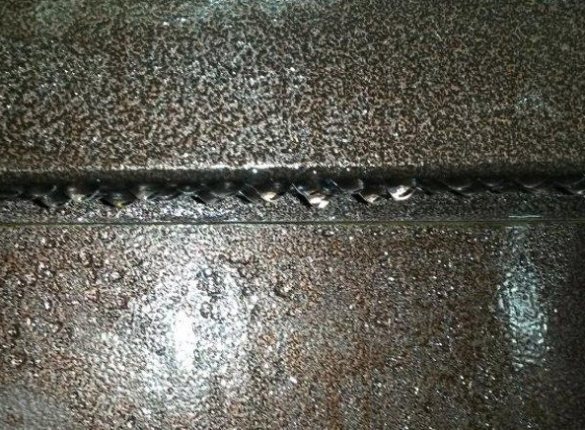

In severe frosts, condensed moisture freezes, forming frost and ice on the door frame and door leaf. Ice can destroy plaster, damage paint on slopes. If the door is finished with MDF panels or clapboard, these materials, under the influence of moisture and ice, will damp, deform, change color, and lose decorative qualities.
Another significant disadvantage of the appearance of condensation is high humidity in the hallway. Water flows down to the floor, forming puddles, and is also absorbed into the slopes, causing the appearance of mold, which is extremely dangerous to human health. All this, moreover, forms a persistent smell of dampness in the room.
Anti-fogging agents for street metal doors: names, method of application
You can fight condensation on the surface of the front door with the help of products for car enthusiasts. Means that prevent condensation from forming on the windshield of the car are suitable.
Funds overview:
- Anti-fog Very Lube. This is a can containing 200 ml of solution. The product is applied once a month to a dry, clean door surface. Please note that the surface must be completely dry. Wash, dry it and only then apply the product.
- Novax... This is also a tool that prevents the formation of condensation on the surface. It is applied to the inside of the entrance door. After applying the product, the surface is wiped with microfiber for glass or smooth surfaces.
- Shell Anti fog. Anti-fogging agent that prevents condensation from forming. It also removes fingerprints and cleans the surface. Therefore, it is necessary to apply the product for the first time in order to clean the door, and then shake the bottle again and apply a thin layer, evenly distributing it with microfiber.
- Atas Rocks... Good anti-fogging agent, 200 ml bottle. Spray on the surface at a distance of 20 cm and spread with a soft cloth. Apply once a week.
- Mathil Black line. Anti-fogging agent, prevents condensation. In order to prevent the accumulation of water, it is necessary to apply the agent both outside and inside the front door, evenly distributing it with a clean sponge or napkin.
Remember, these products do not eliminate the cause of condensation, but only form a special film on the door surface that changes the surface tension. Because of this, condensation still forms, but only rolls off the surface and forms a puddle of water under the door. This method will not save you from the appearance of fungus or violation of the integrity of the door. Before using such means, it is necessary to solve the problem of insufficient insulation and thermal insulation of the door.
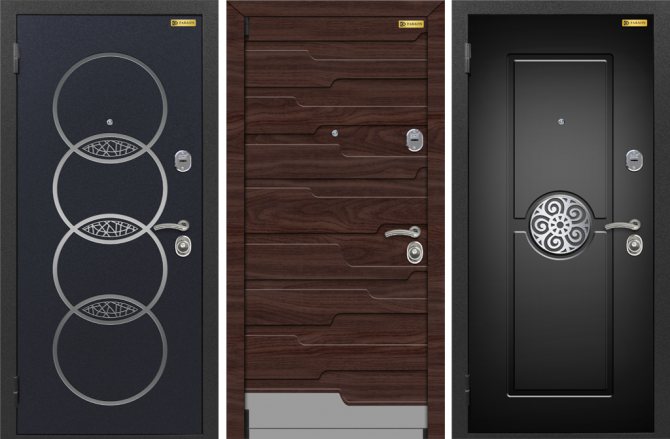

Entrance doors
The formation of condensation on the surface of the front door is a common problem faced by residents of private houses. In order to combat this problem, you can equip a vestibule. If this is not possible, take care of the insulation of the doors, and also insulate the cold bridges.
Prevention is the best treatment: the difference between the front door for a house and an apartment
No matter how strange it may sound, it would be more logical to avoid problems by immediately buying a normal door designed to protect the room from cold weather and atmospheric influences.
Many do not see the difference between front doors for a house and for an apartment, and they buy, for example, an apartment door into the house, and then suffer from condensation. And this applies not only to buyers, but also to so-called sellers advising “great low-cost option”.
The entrance doors for the house and for the apartment should be similar:
- for noise insulation and tightness;
- for anti-vandal qualities and burglary resistance.
But the door for the house must be well insulated and withstand:
- low temperatures;
- ultraviolet light;
- precipitation and other atmospheric phenomena.
Usually, such canvases are coated on the outside with specialized polymer-powder compounds that help insulate cold bridges and help conserve heat in the room.
The best option for a private house is a door with a thermal break. This design can be called: two in one. The essence of the thermal break is that the two canvases are not connected by metal fasteners - this excludes cold bridges and forms a buffer zone. Thermal break is an insulating layer with low thermal conductivity that separates two sheets. A box of this design is usually also manufactured with a thermal break.
How to prevent the problem
There are three ways to help prevent condensation if the door is metal. Let's consider them in more detail:
- Check the structure carefully during installation so that no voids remain between the box and the wall. Even a small gap will lead to problems in the future. It is better to mount the door with high quality from the very beginning, rather than disassemble the structure over time in order to eliminate the cause of condensation;
- Do not install a peephole and it is better to additionally insulate the keyhole;
- Do not purchase a product with vertical transoms that will conduct cold air to the box in frosty weather.
Important! For additional heating, place heaters near the entrance doors. Heating will dry the air and evaporate excess moisture. But do it in moderation, not allowing the door leaf to heat up.
If you do not neglect these tips and deal with the reasons from the very beginning, then you can avoid problems in the future to eliminate which you will have to dismantle the structure. So we follow the rule - it is better to do everything efficiently from the very beginning than to redo it when at first a kind of slight condensation appears, and then just a stream of water at the front door.
Voted over 149 times, average rating 4.6
Comments (1)
Maria Pavlovna Chervatyuk 11/05/201808: 06 Condensation of the entrance door around the entire perimeter, what should I do?
Evaluation
Svetlana 02/13/202018: 45 Oh my God! As well as with double-glazed windows or double-glazed windows! Do the doors flow? Second doors from the inside !!!! Wooden! Recessed and upholstered, as usual foam rubber and dermantin!
Evaluation
Add comment Cancel reply
Recommended to read
Miscellaneous How to choose the right lining for entrance doors and install it yourself? When the renovation is finished, it still seems that something is missing. ...
Closer, Miscellaneous How does a door closer for an entrance door work: a device More recently, in order for the door to close automatically, people ...
Miscellaneous Basic parameters and additional functions of handles for the entrance Chinese door If the handle on the entrance Chinese door is broken, replace it with ...
Platbands, Miscellaneous Correct choice of platbands for installation on interior doors Refining defects or hiding them becomes the final ...
Additional anti-condensation measures
If the recommendations described above did not help to avoid wetting the front door, then you can consider the option of covering the sash with a special powder polymer. This is a type of paint that, due to the structure and method of application, gives the coating thermal insulation properties.
If you have to consider additional measures to combat moisture on the metal, you should consider installing a second door (i.e. vestibule). The advantage of this solution is to reduce heat loss.Heat leaves the room less intensively due to the air space between the leaves. As a result, condensation does not form on the front door. Such a measure allows you to get rid of moisture on the metal surface of the outer sash, provided that other recommendations for getting rid of excess moisture are taken into account.
What makes the door freeze?
In the cold season, the air outside is frosty and dry, and in a closed building it is warmer: because there are people inside who breathe, prepare food, wash and dry things, take a shower.
Condensation appears in the area where these 2 "types" of air come into contact. More precisely, water from warm air condenses - it settles in drops on the surface around the door leaf and on it itself.
Why is this happening:
- High thermal conductivity of iron. A metal door (if there is no insulation, or if its layer is very thin) instantly cools down without "holding back" the cold air.
- Lack of insulation or its small thickness.
- There are gaps in the structure. If the door has been used for a long time, it has been roughly treated, or the load on the opening has been distributed incorrectly, its details are distorted, warped, and gaps appear. They let in not only cold, but also wind and precipitation.
- There are cold bridges: a lock and a peephole.
- Leaking joints. Elastic band stretched across the entire sack protects against heat loss. But over time, it dries out, cracks, and gaps appear.
- In very cold climates, only 1 door is installed. It does not always help to avoid freezing (even if it is warm).
Consequences of inaction
If the owners do not pay attention to the formation of condensation, this will lead to:
- Serious freezing of the canvas.
- Increased heat loss. Such a door will give all the heat to the outside.
- Deformation of the door frame, slopes and curtain. As a result: saving on eliminating the cause of condensation, you have to spend money on a new front door. Is it worth it - you decide?
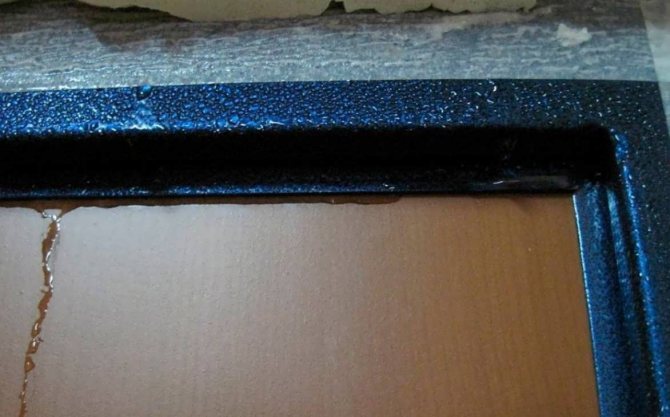

Additional measures
For additional protection against condensation, you can try the following tips:
- install a visor or canopy over the front door. It will partially prevent the direct ingress of snow or rain on the outer door leaf;
- when buying a new door, pay attention to whether it is covered with a special treatment - polymers resistant to temperature extremes and atmospheric precipitation;
- make a vestibule, and install the second door wooden or plastic, but not metal. Then condensation will not appear, since the temperature difference will not be so great. Heat and humid air from living rooms will not go into the corridor;
- if there is no vestibule and there is no way to make it, then put small heating devices or air heaters in the corridor. They will heat the door, slopes and frame, preventing water droplets from forming.
